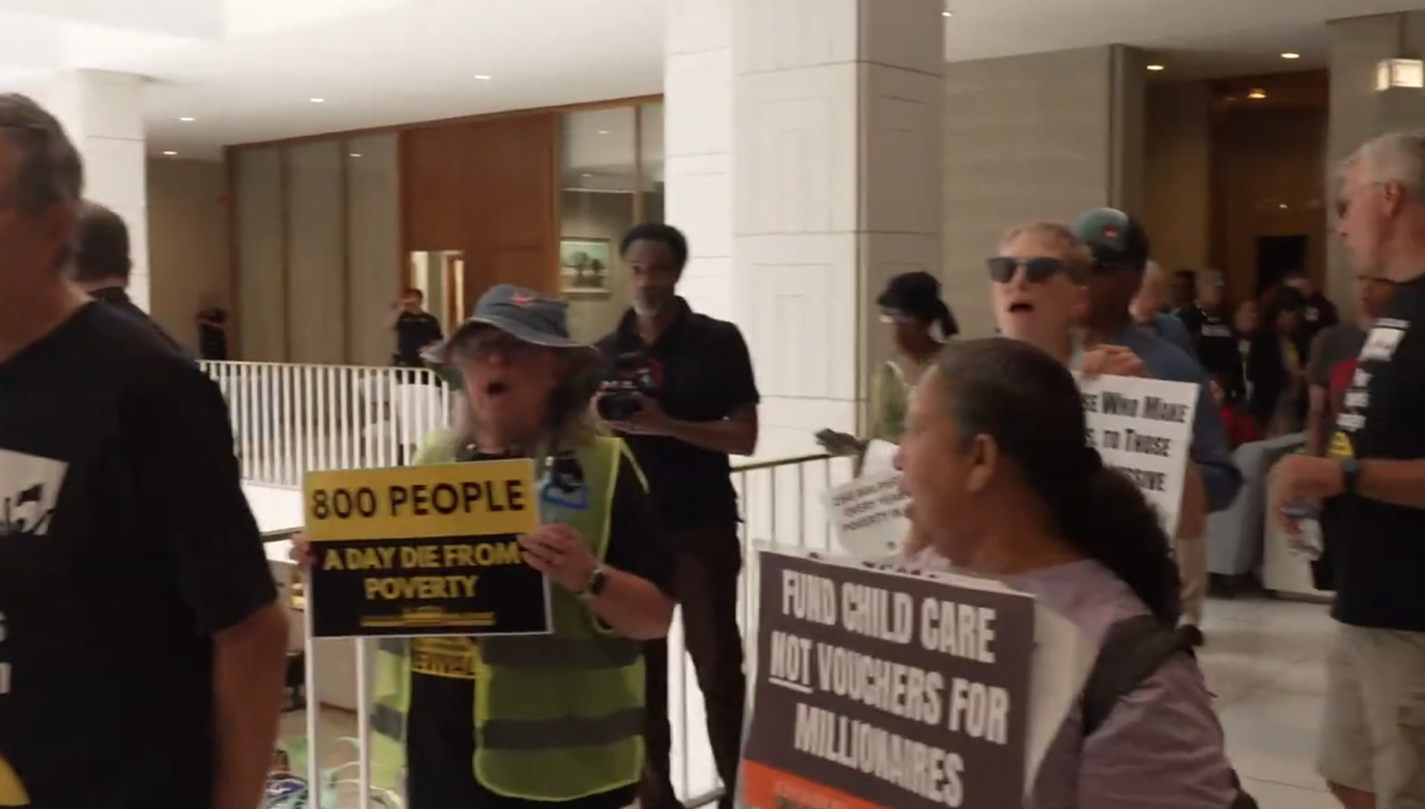This week a variety of groups have been pushing out narratives on more taxpayer funding for childcare. You may wonder why, suddenly, this is such a crisis issue. It is because billions in COVID-era government handouts to the industry are expiring this month.
Calls to have North Carolina taxpayers subsidize the industry are coming in fast from interest groups, the governor’s office, and others. At the North Carolina General Assembly on Wednesday, the Poor People’s Campaign, led by Rev. William Barber, brought demonstrators to call for daycare subsidies, among other issues.

However, the seemingly automatic call to spend more triggered this inflationary mess in the first place. In a recent CJ survey of North Carolina voters, more than 57% said that tax credits and reducing industry regulations to reduce childcare costs were the best avenue to affordable childcare for families. Just 16% thought government subsidies were the answer.

Back in in 2021 as part of the American Rescue Plan, Congress and the Biden administration pushed through $24 billion in one-time “stabilization grants” to tide the childcare industry over while the rest of society struggled under the weight of government-imposed shutdowns. Families who depended on having their children in public schools while they worked in “essential businesses,” like hospitals or big box retail stores, suddenly did not have care for them. In the end, the ARP grants essentially launched a pilot program in federally funded childcare.
North Carolina got $805.8 million in the federal ARP plan for the childcare industry. Approximately 4,500 childcare businesses received grants. According to the federal Administration for Children and Families, the average grant for childcare centers was $227,700 and family childcare homes received an average of $40,600. Including the COVID grants, North Carolina received more than $1.97 billion in Child Care and Development Funds (CCDF) in 2021, as compared to $293 million in FY 2019.
The COVID-era grants expired in October of 2023, and were extended until June of 2024. Now, North Carolina as with other states, is experiencing a “benefits cliff” because that temporary extra COVID money is stopping. North Carolina’s fiscal “cliff” is an estimated $1.67 million, according to the state Department of Health and Human Services.
Back in 2021, states were required to submit a plan of how to spend the millions they got, and what they were planning to do when it stopped. Few, it appears, thought that would really happen. Many spent it on smaller class sizes and employees to comply with the CDC’s distancing rules, and they bought personal protective equipment (PPE) and cleaning supplies. Others paid out bonuses to keep their staff. Now many are saying they say they will have to raise rates on families or close their doors.
The pressure to continue the federal American Rescue Plan’s spending on childcare subsidies has been stepping up over the last few months. The governor’s budget says that North Carolina taxpayers should spend $745 million in subsidizing the industry, in the form of “stabilization grants,” and other programs. State Sen. Rachel Hunt, Democratic candidate for North Carolina’s lieutenant governor, has also made the issue a centerpiece of her campaign.
A survey from the North Carolina Chamber Foundation and NC Child was released Wednesday highlighting the economic impact of what they called the “childcare gap” in North Carolina. Clearly, lawmakers are getting pressure from all sides to increase taxpayer-paid government subsidies for a specific industry. In other states, like Minnesota, Vermont, and New York, lawmakers have already spent millions of state taxpayers’ dollars in childcare-industry subsidies.
It is notable that most of these calls are not for childcare vouchers for families to spend on the best fit for their child but rather for government subsidies for childcare facilities. Ultimately, subsidies in any industry raise the overall prices for consumers, and childcare would be no exception.
“If they really cared about bringing down childcare costs they would try to peel back the subsidies and massive regulations that drive the costs up to begin with,” said Brian Balfour, senior vice president of research for the John Locke Foundation. “Throwing more subsidies at it — while offering some help to the recipients — is just going to drive up the prices.”
The challenge faced now is that the federal grant money was never publicly intended to be permanent. It was stop-gap help for childcare businesses facing a global pandemic and forced closures. As with all government programs, no matter how clearly the spending is labeled as temporary, once people get used to subsidies it is difficult to put the toothpaste back in the tube.